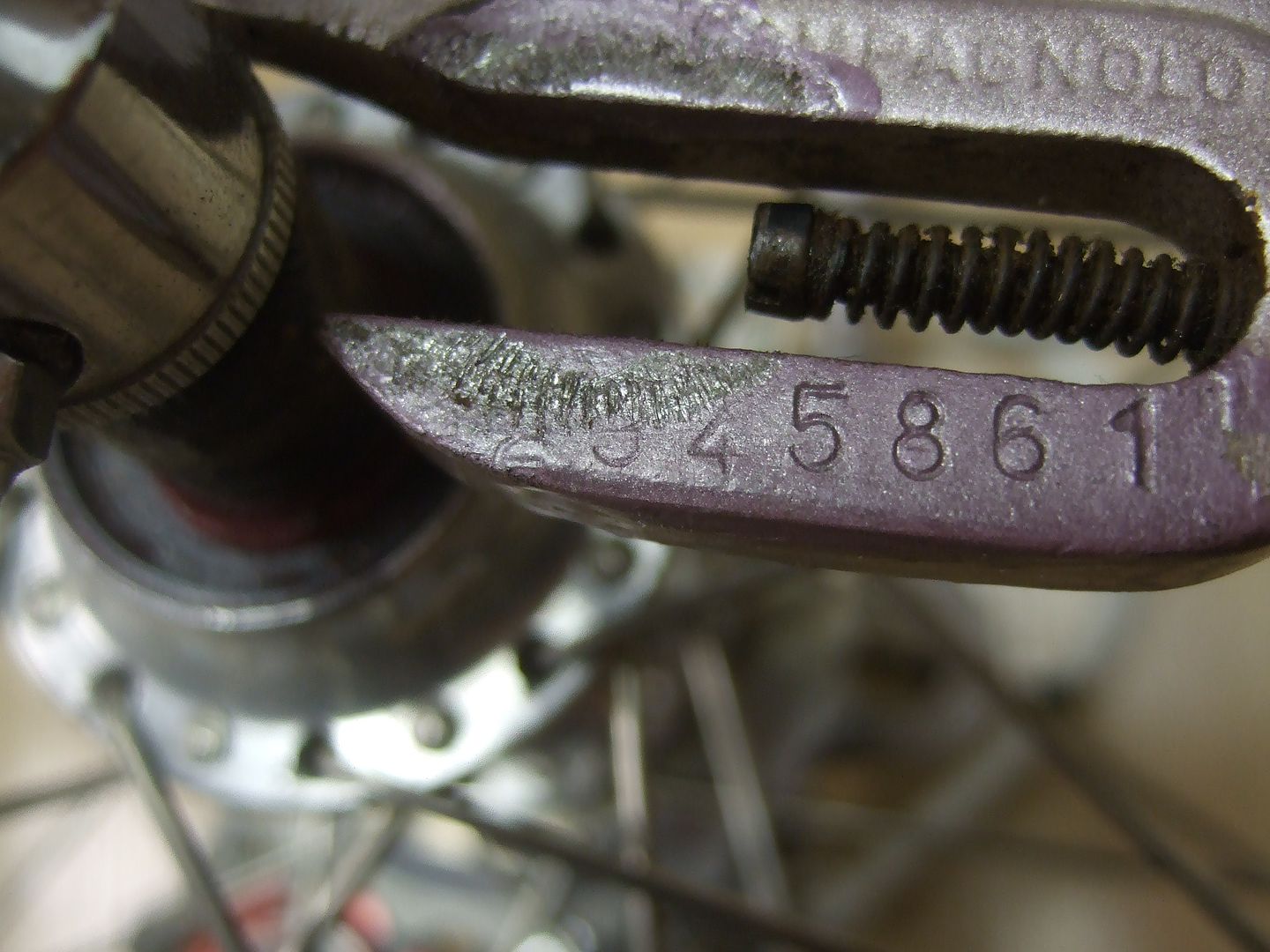
Motobecane Serial Number Decoder
Bike Serial Numbers. The serial number will be engraved underneath the bottom bracket shell on the frame. Just flip that bike over and take a peek! Bicycle serial numbers can be hard to locate and decipher. Learn how to read a vintage bicycle serial numbers in this free video from an experienced vintage bicycle dealer. Expert: Vin Vullo.
Date of Manufacture for Bicycle Components [] [] [] [] [] [] [] [] [] [] [] [] [] [] [] [] [] [] [] [] The date of manufacture of a bicycle's components can often be used to determine the date of manufacture of the bike itself. Some bike parts have a date code cast or stamped into the piece. This clearly is when the component was made and not when the bike was made, but unless the component or bike manufacturer had lots of stock lying around in inventory, the date should be a fairly good indication of the year of the bike. At least it would be the earliest date that the bike could have been made. Of course, all this assumes the bike has the original component. The most likely components to be original are the stem, handlebars, seatpost, and brakes. The rear derailleur freewheel/cassette and chainwheels are probably the first to be changed on a bike.
On a vintage bike in excellent condition (that apparently had a lonely existence in a garage) all of the components likely are original. As the wear on a vintage bike increases, the greater the likelihood components are not original, either through replacement of worn parts or through component swaps. Swaps can take place early in the life of a bike as the proud new owner upgrades to new or used components of higher quality. Swaps also can be made as the bike falls out of favor, or is being sold, where the higher quality components are traded for lower quality ones that the owner had onhand. (Don't all cyclists have boxes and boxes of old components in their garage?) Most early Treks (1976 through about 1980) were sold as framesets.
The components were added by the local bike shop or by the buyer. New components often were used.
Components also could be swapped from an existing ride to the new frameset. This makes dating the components an interesting archeological investigation, but one not necessarily related to the date of the bike. A date code is marked on most or all SR seatposts. Trek owner Larry Osborn made this observation, and suggested this as a supplementary way of dating a Trek (and other bikes as well).
Fueled by this first realization, and with the help of other bike folks, Larry and I have sorted out other codes (a project still ongoing). Especially useful, and challenging to sort out and verify, was the Shimano code. Also gathered on this page are date codes decoded and generously provided by others. For Treks, the SR date markings are especially important. Virtually all of the Treks not equipped with Campagnolo or Shimano Dura-Ace components, started life with some grade of SR seatpost and may also have SR stems, bars or cranks. Even those equipped with Suntour Superbe components usually had SR seatposts.
Many components are marked with size descriptors in addition to component manufacturer's date codes. For example, the back of cranks are usually marked with crank arm length in mm, typically in the range of 165 to 185. Seatposts are marked with outside diameter, also in mm. For old Treks, 27.2 is the most common, but for other bikes the diameters can range from 25mm to 33mm.
Derailleur Dates in 'The Dancing Chain' The rear derailleur can often be dated to a year or two by referring to the book 'The Dancing Chain - History and Development of the Derailleur Bicycle', by Frank Berto, 3rd edition 2009. The Appendix gives dates of initial manufacture for the vast majority of derailleurs made from 1920 to 1999. Request for Information This component dating discussion is a work in progress. If you have confirmation of the date codes, or corrections or additions to the codes, please. Other manufacturers of bicycle components have date marks on their pieces. Unfortunately, many of these are coded, and require some additional knowledge to understand the code. If you know of other components that are marked or coded that can be added to this list, please let me know.
A NOTE ABOUT ATTRIBUTION: The information on this page is copyrighted. Feel free to quote small parts of the information on this page, but copyright law requires Vintage-Trek.com be listed as the source of the information.
Babyshwar • Rohit Purohit as Aryan • Iqbal Khan as Disco, the canteen manger • Devansh Doshi as Paresh Bhai • Hiten Tejwani as Mr. Priyanshu Mandal • Manmauji as Ramu Kaka Season 1 only • Prabal Panjabi as Jango • Rajesh Jais as Mr. Singhania • Mihir Mishra as Mr. Sandra D'Souza • Bhuvanesh Shetty as Mr. Mehra Season 2 only • Delnaaz Paul as Mrs. Kya mast hai life serial songs download full.
In this website, we credit the people involved in the understanding of these codes. Their work must not be stolen. (Naturally, for information provided by others, such as for the Campagnolo and Williams codes, the original source should be cited.) Atom Atom pedals and hubs use the same date code as Maillard. Campagnolo The dating of Campy components (hub lock nuts, rear derailleurs, and cranks) is described at the bottom of Chuck Schmidt's excellent Campagnolo timeline: Dia-Compe and Weinmann Thanks to Ben Weiner for sending the following information about Dia-Compe and Weinmann brakes. Ben writes: 'Brakes and brake levers often have date codes on them. Weinmann and Dia-Compe calipers usually have codes on the back of a caliper arm. This can be simple like '0784' (month 07, 1984) or a clock-type, with year in the middle and a ring of numbers with a tickmark pointing to the month.'